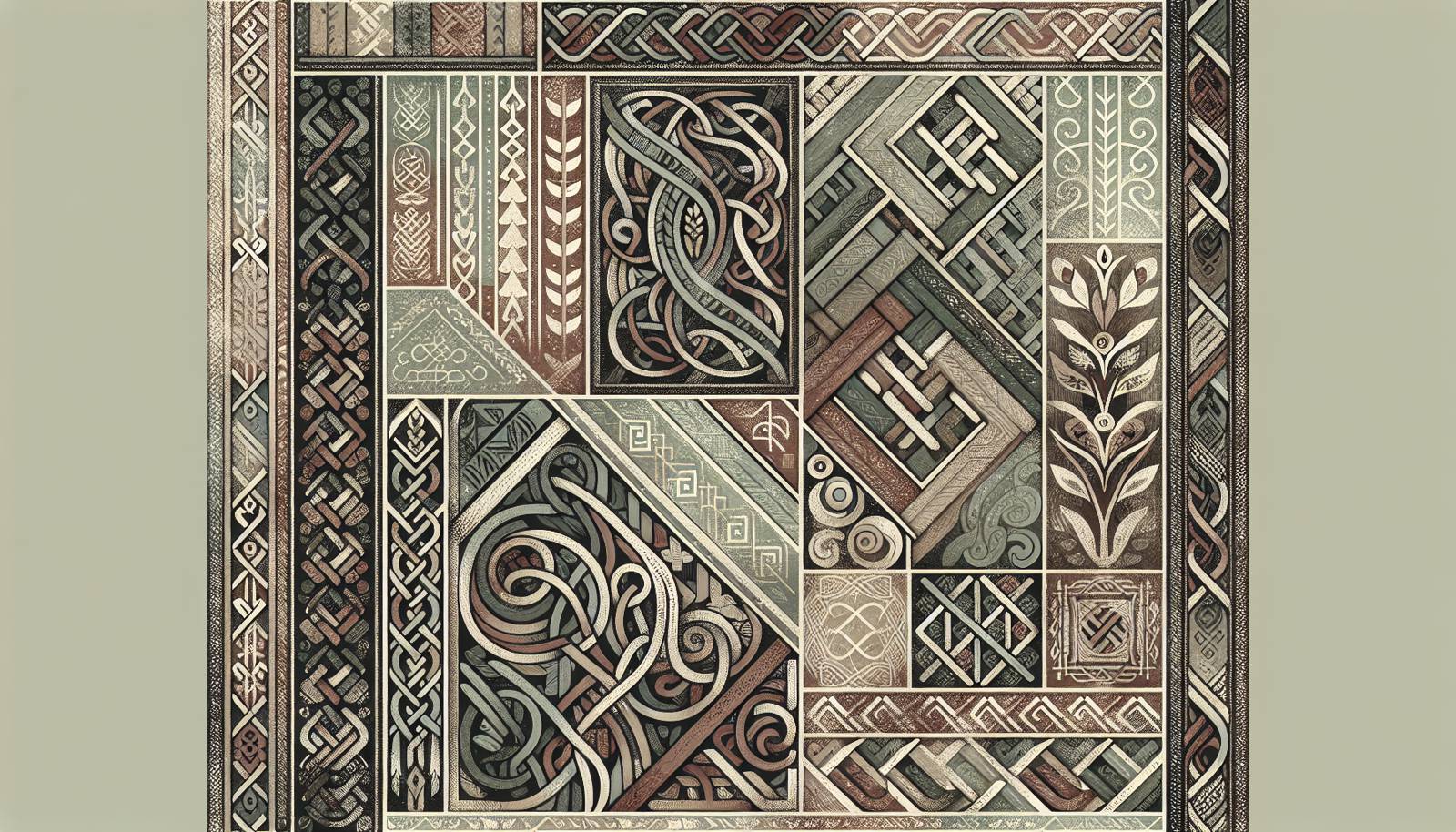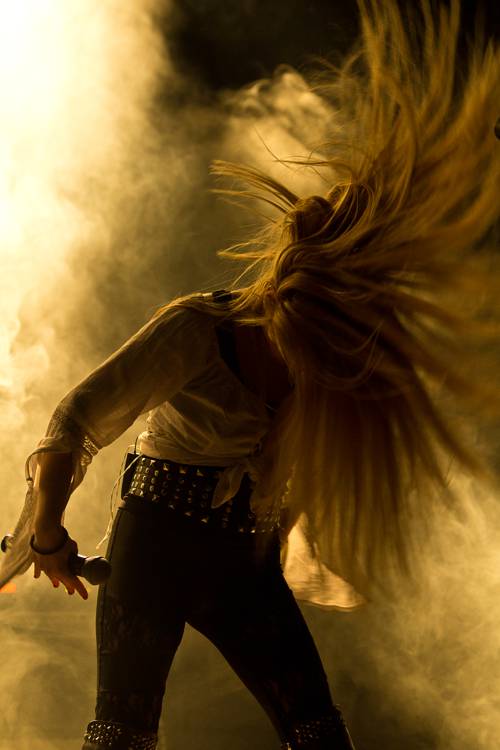
FAQ About The Role of Folk Metal in Cultural Expression

What is folk metal?
Folk metal is a subgenre of heavy metal music that blends elements of traditional folk music with the intensity and style of heavy metal. It often incorporates instruments characteristic of folk music, such as fiddles, bagpipes, and flutes, alongside electric guitars and drums. This genre emerged in Europe during the 1990s and is known for its rich storytelling and cultural narratives.

How does folk metal incorporate traditional folk music?
Folk metal incorporates traditional folk music by using folk instruments, melodies, themes, and languages. Bands often integrate regional folklore, mythology, and history into their lyrics, creating authentic and culturally rich music. The use of traditional instruments like violins, accordions, and bagpipes is common, and some bands include actual folk songs or melodies to give their music a distinctive cultural flavor.

What are some notable bands in the folk metal genre?
Some prominent bands in the folk metal genre include Finntroll, Eluveitie, Korpiklaani, Týr, and Amorphis. Each of these bands brings their unique cultural heritage and musical influences to the genre, helping to enrich the diversity and global appeal of folk metal.

How does folk metal explore cultural narratives?
Folk metal explores cultural narratives by integrating stories from folklore, mythologies, and historical events into their music. The genre serves as a platform for storytelling, where bands use songs as narratives that communicate cultural values, historical tales, and mythical legends. This storytelling allows the listener to connect with different cultural identities and historical perspectives while enjoying the music.

Why is folk metal popular in certain regions?
Folk metal is particularly popular in regions where there is a strong tradition of folk music and cultural pride, such as Scandinavia, Ireland, and the Baltic countries. These areas have rich histories and folklore that lend themselves to the fusion of folk and heavy metal. The genre often represents a celebration and preservation of cultural heritage, providing a connection to the past and a means of expressing regional identity.

How has folk metal influenced global music culture?
Folk metal has contributed to global music culture by promoting cultural diversity and cross-cultural collaborations. The genre's popularity has encouraged musicians from different cultures to explore their own traditional music within a metal framework, leading to new and innovative sounds. Furthermore, folk metal has introduced audiences worldwide to the traditional stories and instruments of various cultures, increasing interest in and appreciation for global folk traditions.

What role does language play in folk metal?
Language plays a significant role in folk metal by conveying cultural authenticity and enriching the storytelling experience. Many folk metal bands choose to sing in their native languages or incorporate linguistic elements from the cultures they represent. This choice adds layers to the music, allowing listeners to engage with the original cultural context and fostering a deeper connection to the music's narrative.

Can folk metal contribute to cultural preservation?
Yes, folk metal can contribute to cultural preservation by revitalizing interest in traditional folklore, languages, and musical styles. By blending these elements with a modern musical genre, folk metal keeps cultural traditions alive for new generations. It raises awareness about a culture's stories and practices, encouraging others to learn more about and appreciate diverse cultural heritages.

What traditional instruments are commonly used in folk metal?
Common traditional instruments in folk metal include the violin, accordion, flute, bagpipes, hurdy-gurdy, and various types of percussion such as bodhrans and djembes. These instruments bring unique textures and sounds that reflect the folk influences within the music, making it both distinctive and evocative of the cultures it represents.

How do imagery and visuals enhance the cultural expression in folk metal?
Imagery and visuals play a critical role in enhancing cultural expression within folk metal. Album covers, music videos, and live performances often incorporate traditional symbols, costumes, and landscapes that align with the themes of the music. These visuals support the storytelling aspect of folk metal, providing a rich visual context to the cultural narratives and helping to immerse the audience in the cultural experience.

Do folk metal bands collaborate with folk musicians?
Yes, folk metal bands often collaborate with folk musicians to enhance their sound and maintain cultural authenticity. These collaborations can involve the use of traditional instruments, co-writing of songs, or integrating traditional folk tunes into metal compositions. Such partnerships can enrich the music, providing a genuine folk influence and ensuring a respectful representation of the traditional elements being used.

What are the lyrical themes commonly found in folk metal?
Lyrical themes in folk metal often revolve around mythology, legends, nature, history, and cultural pride. Many bands draw inspiration from their own regional folklore, crafting songs that tell stories of ancient heroes, mythical creatures, and historical battles. These themes resonate with listeners who have an interest in history and mythology, contributing to the genre's unique appeal.

Is folk metal recognized in music awards and festivals?
Folk metal has gained recognition within music awards and festivals, although it remains a niche genre. There are specific festivals dedicated to folk metal, such as Heidenfest and Paganfest, which celebrate the genre with lineups of prominent folk metal bands. Additionally, some bands within the genre receive nominations and awards at larger metal music events, recognizing their contributions to the metal scene and musical innovation.

What challenges does folk metal face in maintaining cultural integrity?
Folk metal faces challenges in maintaining cultural integrity, such as the risk of cultural appropriation and misrepresentation. As bands incorporate elements from various cultures, they must navigate respectfully and authentically using folk traditions. Ensuring collaborations with cultural experts, research, and genuine understanding of the cultures represented can help mitigate these challenges.

How do folk metal bands balance modern and traditional elements?
Folk metal bands balance modern and traditional elements by carefully integrating heavy metal styles with folk influences. This involves blending modern instruments like electric guitars and drums with traditional folk instruments and musical scales. Bands often experiment with different soundscapes and production techniques to create music that feels contemporary yet deeply rooted in traditional cultural expressions.

What is the history of folk metal's development?
Folk metal developed during the 1990s when bands began to merge traditional folk music with heavy metal. The genre emerged predominantly in Europe, with early pioneers like Skyclad and Subway to Sally leading the way. Over time, folk metal has evolved to include a wide range of cultural influences and music styles from different parts of the world, each contributing to its dynamic and diverse character.

How do fans engage with the cultural aspects of folk metal?
Fans engage with the cultural aspects of folk metal by exploring the stories, histories, and traditions behind the music. Many fans are drawn to the genre for its deep cultural narratives and often seek to learn more about the cultures and folklore being represented. Additionally, fans participate in folk metal festivals where they can experience live performances and connect with others who share an appreciation for the music and its cultural themes.

Can folk metal influence cultural tourism?
Folk metal can influence cultural tourism by sparking interest in the regions and cultures featured in the music. As listeners become enthralled by the cultural stories and themes present in folk metal, they may be inspired to visit the countries and sites associated with the folklore and history they have heard, thereby enriching their understanding of those cultures and contributing to local tourism industries.

Are there subgenres within folk metal?
Yes, there are subgenres within folk metal that highlight different cultural influences and musical stylings. For example, viking metal emphasizes Norse mythology and Viking culture, while pagan metal incorporates themes specific to pagan traditions and myths. Each subgenre provides its unique take on the folk metal sound, allowing for a broad spectrum of cultural and musical diversity within the overarching genre.

What impact do folk metal bands have on cultural identity?
Folk metal bands impact cultural identity by reinforcing cultural pride and awareness through their music. By drawing from traditional elements and stories, these bands help listeners connect with their cultural roots or explore cultures different from their own. This can foster a sense of belonging and understanding, both for individuals within a particular culture and for those from different backgrounds exposed to the music.
